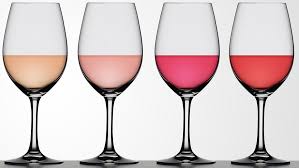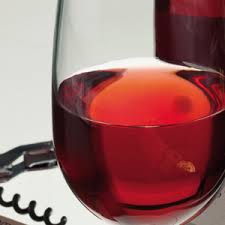This post is also available in: Spanish
Would you know how to differentiate between a rosé wine and a claret wine?. You could differentiate between a rosé wine and a claret wine. We know what are the differences between a rosé wine and a claret wine. Is it the same or is it not the same?
We will try to clarify these two concepts and types of wines.

Would you know how to differentiate between a rosé wine and a claret wine?
What is a claret

Claret wine is a young wine. He has no upbringing.
It is a wine that is made in a similar way to a red wine. That is, making the fermentation with the skins, but adding a significant amount of white grapes.
This way you get a wine with a very pale or very pale pink color, hence the name claret.
The claret is very typical of drinking in areas of Spain such as Navarra, Aragón, Burgos and Soria.
Their differences with the rosé wine are based on:
-the elaboration
-the type of grape
Wine making
As we said before, its preparation does not differ much from that of a red wine.
The usual thing is that the red grapes are introduced, sometimes the red must is bled and the skins are left in the tank. Other times, simply add the red grapes and their must, to then fill the deposit with white wine must, so that the maceration with the red grape skins contributes that onion color usual in the claret.
Claret wine is not wine of lower quality. It is a wine with a softer color and a lot of fruit aroma in the nose.
It has more structure than a white wine, due to the skins of the tannins of the red grape.
Type of wine
Claret wine uses both red and white grapes. The proportion of each type of grape depends on who makes it, but always fulfilling the minimum values in force.
Current legislation requires the use of red grapes at least 25%.
The Rosé wine

It is a type of wine that is made with red grapes or a mixture of red and white grapes (the latter in a small proportion). Its color is darker and generally more vivid than that obtained in the claret.
In the rosé wines there may be wines:
Young boys
Parenting
Reservation
Gran Reserva
Depending on the time spent in the cellar and in the barrel.
Elaboration of the pink wine
Its elaboration is carried out by means of a bleeding of the deposit to eliminate the skins and to ferment only the resulting must, just as the white wines are elaborated. That is why it is known as “blank”.
The color of the rosé wine depends on how long the must is in contact with the skins.
Therefore, we can say that the rosé wine comes from the maceration of the skins of the grapes used that are the deposit. Subsequently the bleeding of this liquid and its fermentation without skins at low temperature is performed.
There are two methods of making rosé wine:
Bleeding: The red grape is destemmed, macerated and after 10-40 hours depending on the desired color, the “bleeding” is carried out.
Direct pressing: The grape (white or red in proportion) is pressed, giving the wort a slight touch of color by the pigments of the skin.
Types of grapes used in the pink wine
In this type of wine, the legislation requires that at least 50% of the grapes used be red. In general, the percentage is higher.
Consumption and temperature of rosé and claret wines
Both rosé wines and claret wines must be consumed in the months following their elaboration, since they do not have aging.
Its advisable temperature to consume ranges between 8º and 10º.
Since the consumption temperature is low, it is advisable, as with white wines, to have a bucket with ice or any maintenance system of the recommended temperature at the time of consumption.
Pairing
Provided that the rosé wines used in the meals are not aged, these wines go well with:
Rice, pasta, vegetables and all kinds of vegetables.
In desserts can accompany soft cheeses.